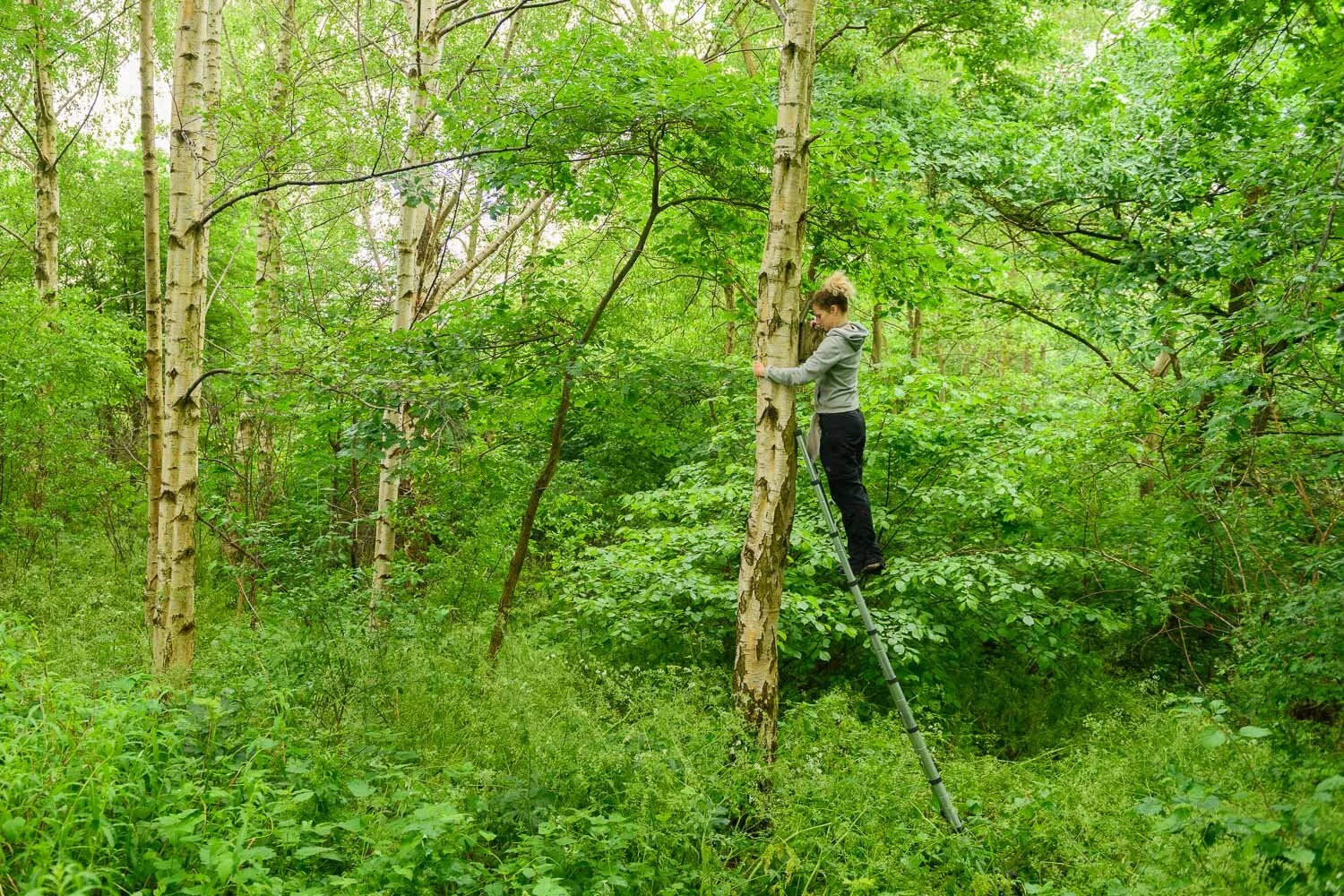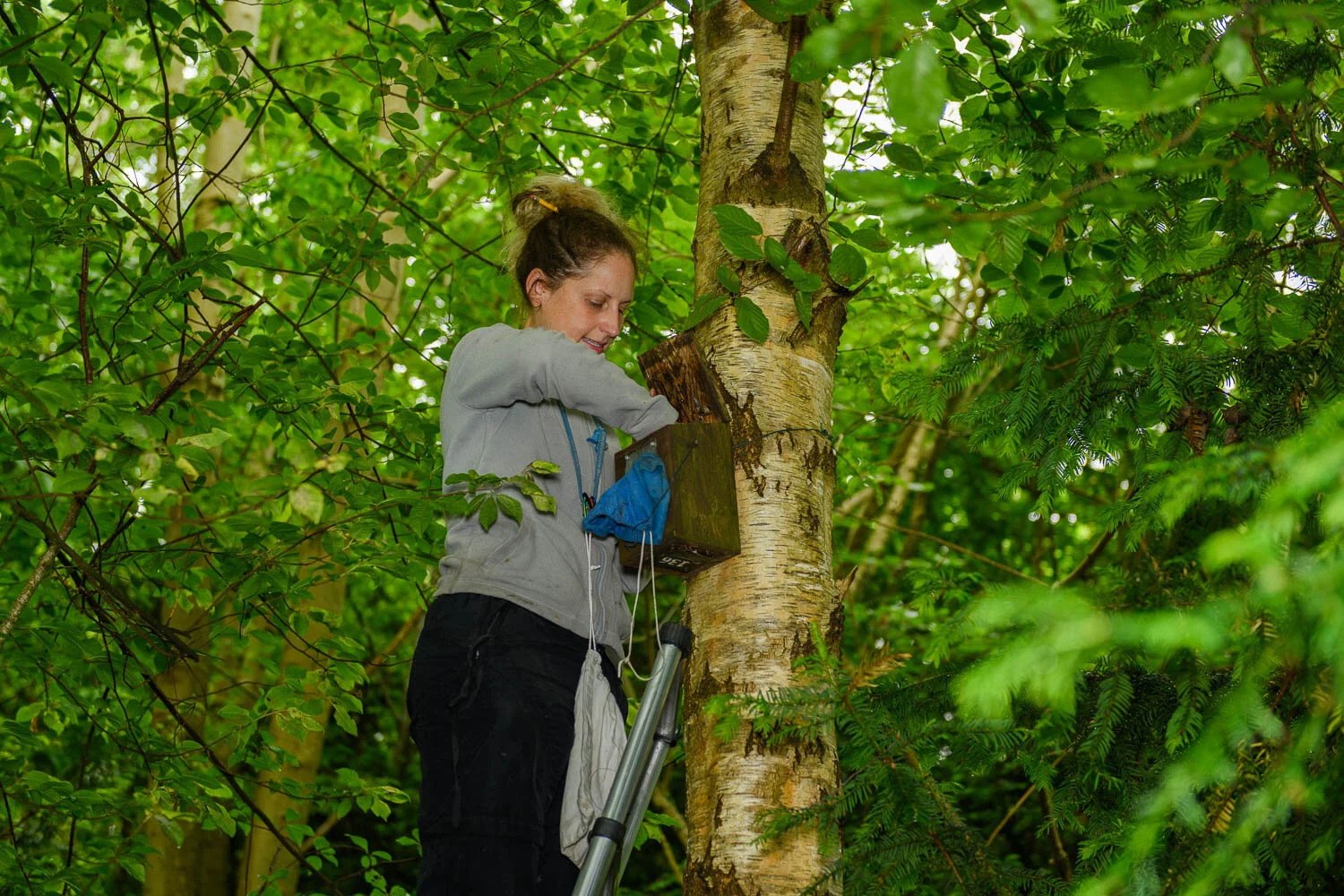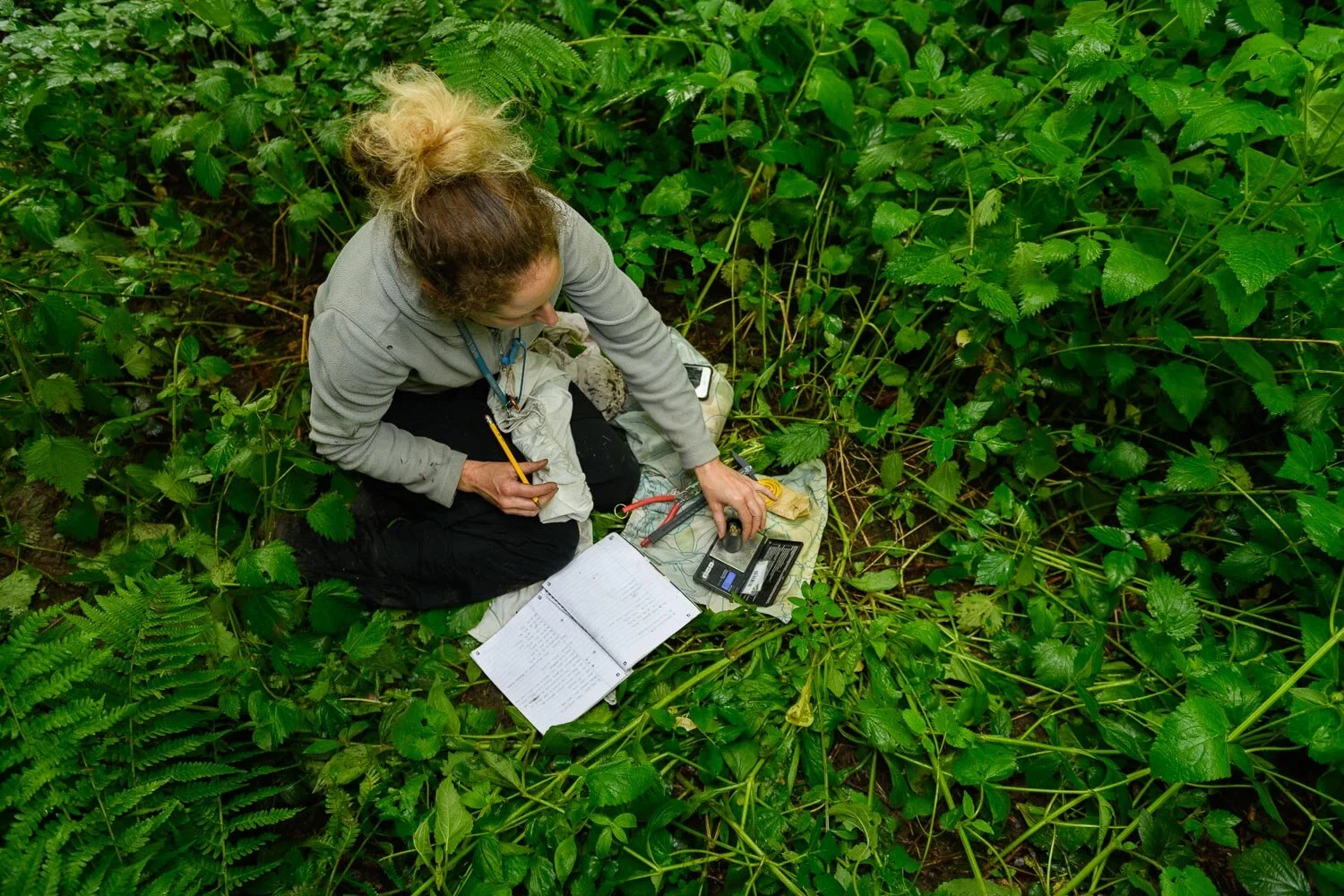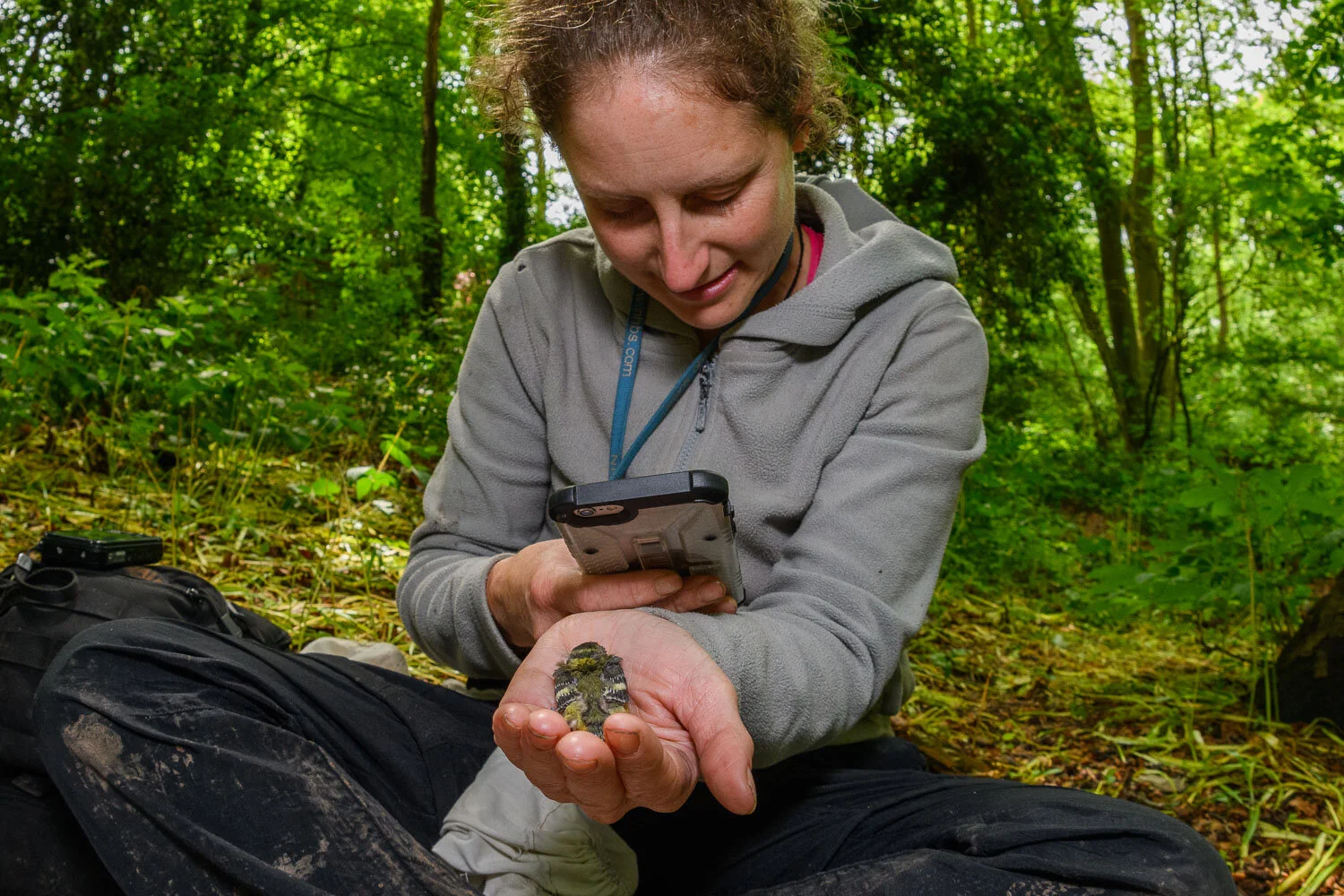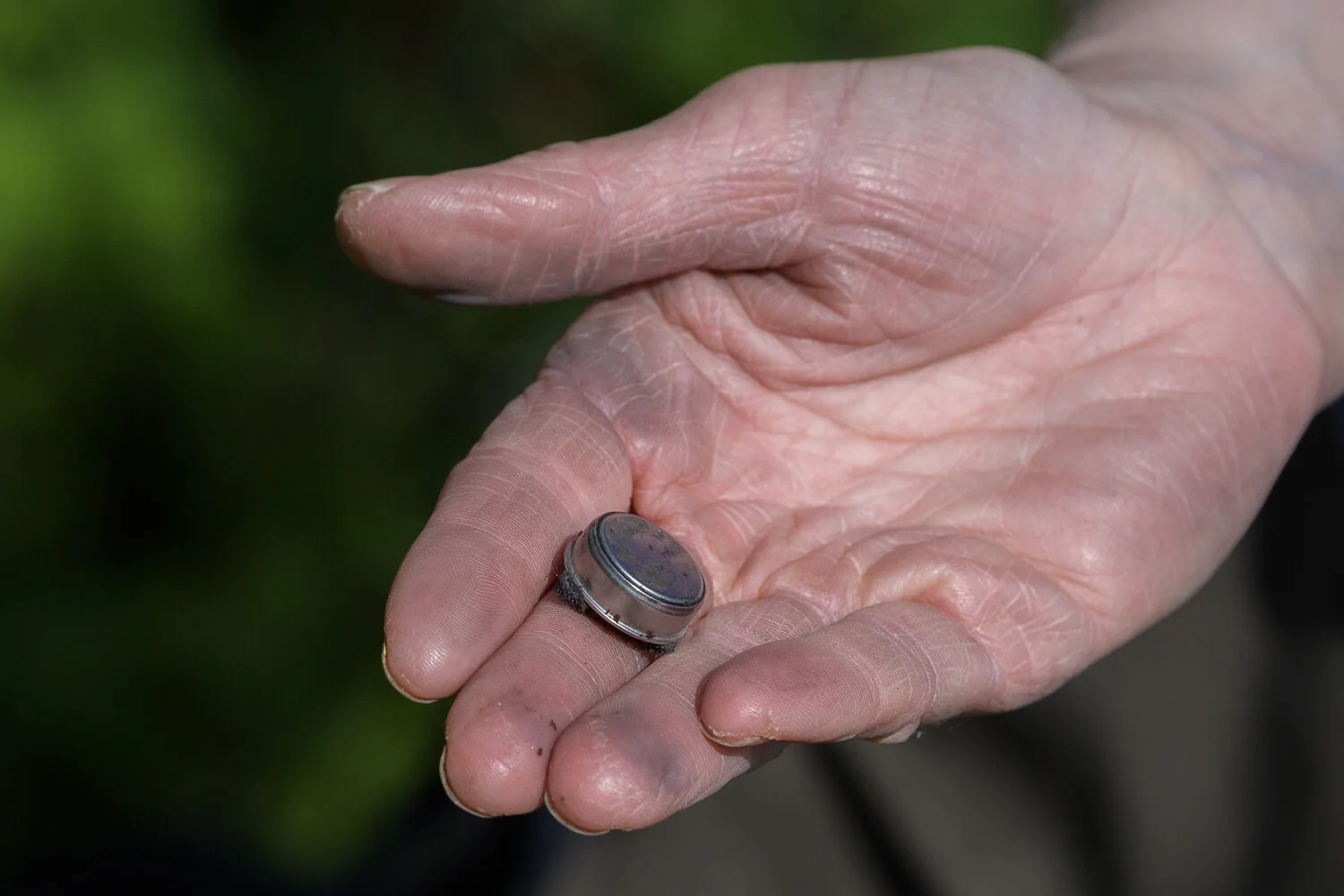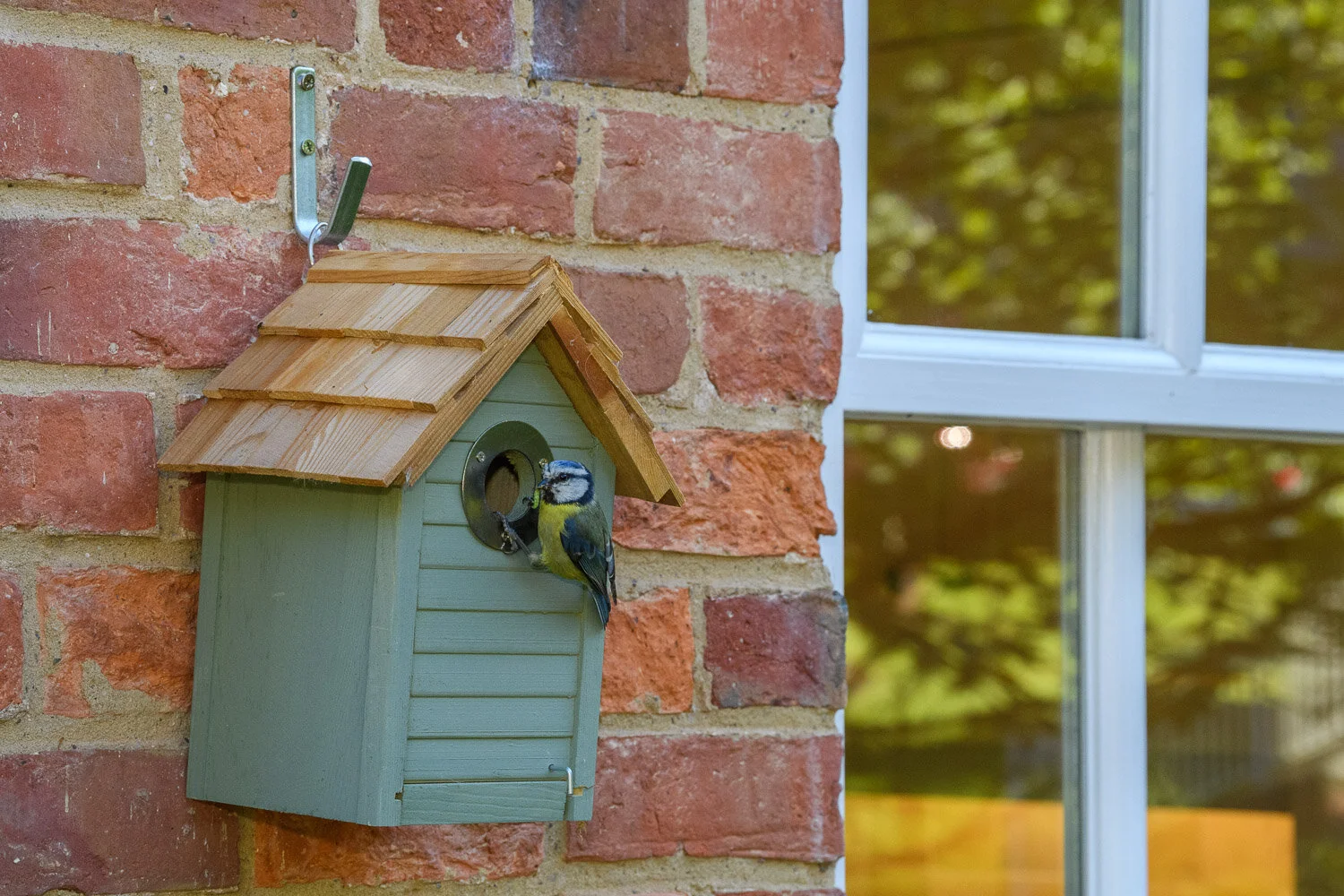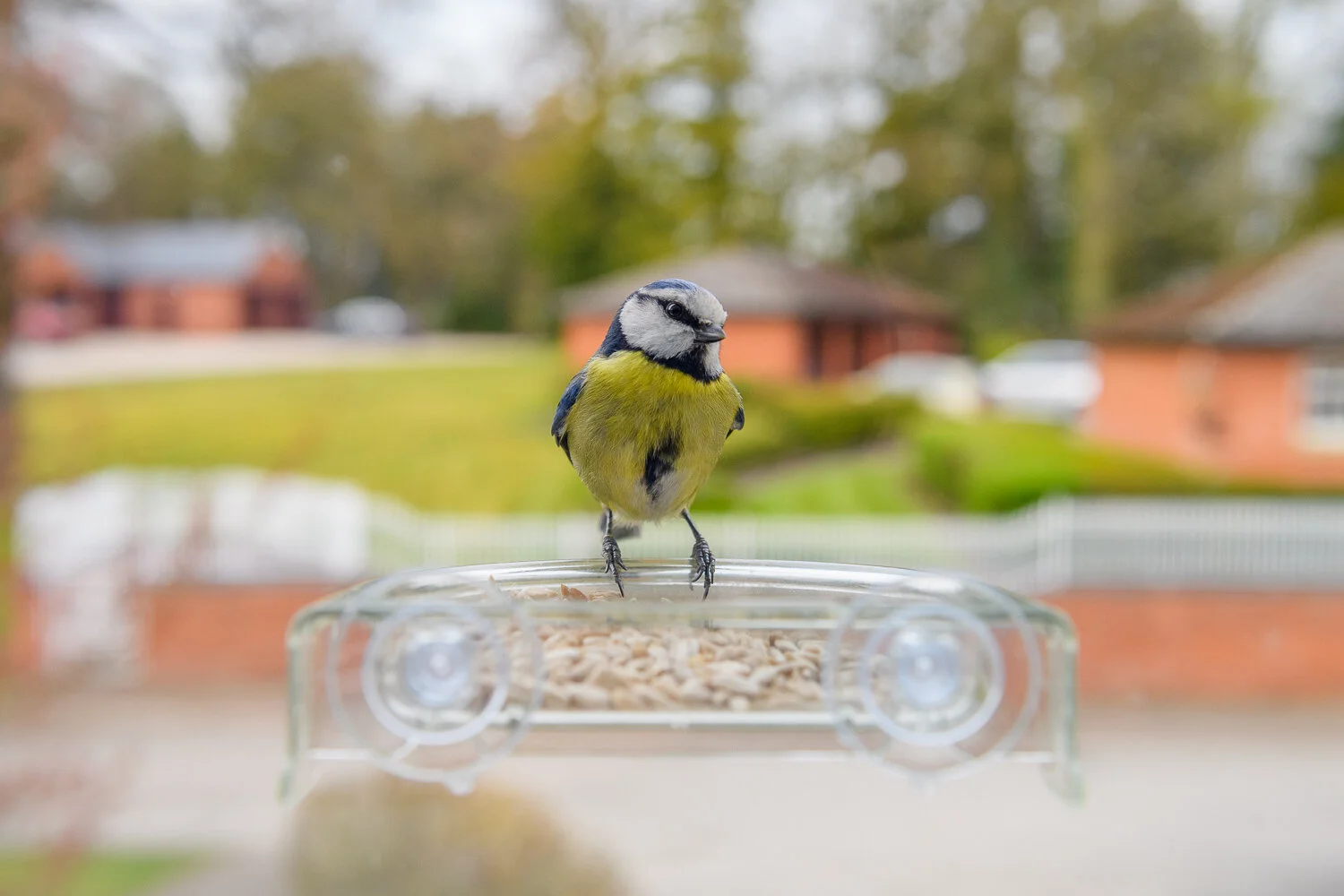Birmingham Urban Blue Tit Research
Over the summers of 2018 and 2019, I worked with Victoria Pattison-Willits documenting the field work for her PHD. Vicki is part of the School of Geography, Earth and Environmental Sciences at Birmingham University. Her PHD focuses on investigating the dual impacts of urbanisation and extreme weather events on breeding phenology and success in blue tits (Cyanistes caeruleus). As a photographer, my role was to document Vicki’s field work as an observer. Given how hard Vicki worked on her fieldwork (see the statistics put together by Vicki below the image gallery), I could not cause any delay or interference to her work. This meant there was no time to set up any images and this was very much a “run and gun” style of documentary photography.
Vicki’s study sites were spred out across the larger Birmingham conurbation and included various diverse urban habitats from urban woodland to city centre parks. As well as putting up nest boxes at each of the study sites, monitoring equipment was also installed near to the nest boxes at several of the study sites.
At each study site, Vicki would inspect the nest for blue tits and their eggs. The work involved capturing and ringing the blue tits. The birds would also be be weighed and measured. All of this would be undertaken with great care so as not to harm any of the blue tits. Once the work was completed, the blue tits would be returned to their nest box and we would move on to the nest site.
One of the trickiest parts of the project was to produce images of urban blue tits at their nest boxes. Due to the urban locations of the study sites in and around Birmingham, I had to find an alternative location to photograph blue tits at their nest. During the summer of 2019, a pair of blue tits attempted to build their nest in the exhaust vent of the oil boiler at my house. To protect the birds, I sealed off the vent with chicken wire and put up a nest box on the front of my house near the vent as an alternative nest site. As I hoped, the blue tits abandoned their attempts to nest in the vent and instead nested in the nest box. As the blue tits were accustomed to human presence - they regularly come to the bird feeder on the tree outside my front door - they were tolerant of a close approach and I was able to photograph them at their nest without any disturbance.
I also have a feeder set up on the upstairs window of my office. This sun flower hearts that I place in the feeder attract many birds including the local blue tits. The view looking out of the window with a blue tit perched on the feeder shows a unique perspective of the blue tits.
A gallery of images from my work with Viki can be found below.
Vicki put together some statistics on the work involved in her field work for her PHD, these make for interesting reading:
1. Birmingham has a total area of 231.2 square miles. The study sites were spread across Birmingham from the north to south and east to west. There were 31 study sites across the city with a total of 310 nestboxes. Each of the study sites and nest boxes was visited once a week on average, every week during the breeding season.
2. Vicki estimates that she drove about 5250 miles over the three years of fieldwork - to put that into perspective New York is 3466 miles away and Cairo, Egypt 3514 miles away from Birmingham!
3. Vicki has no idea how far she and her field assistants walked but it was a great distance!
4. In climbing the ladder to reach the nest boxes, Vicki and her research assistants climbed a total height of about 26 040 metres - Mount Everest is 8848 metres above sea level.
5. Each field season started in late February and finished when the last Blue tit chick fledged which depending on the year was about half way through to the end of June. There was also another round of site visits in September to collect the nests. Before the field season started properly, in January Vicki would hone her carpentary skills fixing nestboxes and making sure everything was ready for the coming season.
6. Vicki had very few days off during each field season - to get around all the sites and deal with the data she would work from 7-8am in the morning until 10-11pm in the evening 7 days a week.
7. During the three years of field work (2016-2018): Vicki and her assistants counted 4212 Blue tit eggs; 3188 chicks hatched; and 1947 Blue tits fledged. Vicki ringed 1861 Blue tit chicks and 160 adults.
8. Vicki was followed by a police helicopter on at least three occasions, trod in a lot of poo and met a lot of lovely people during the course of her field work.


